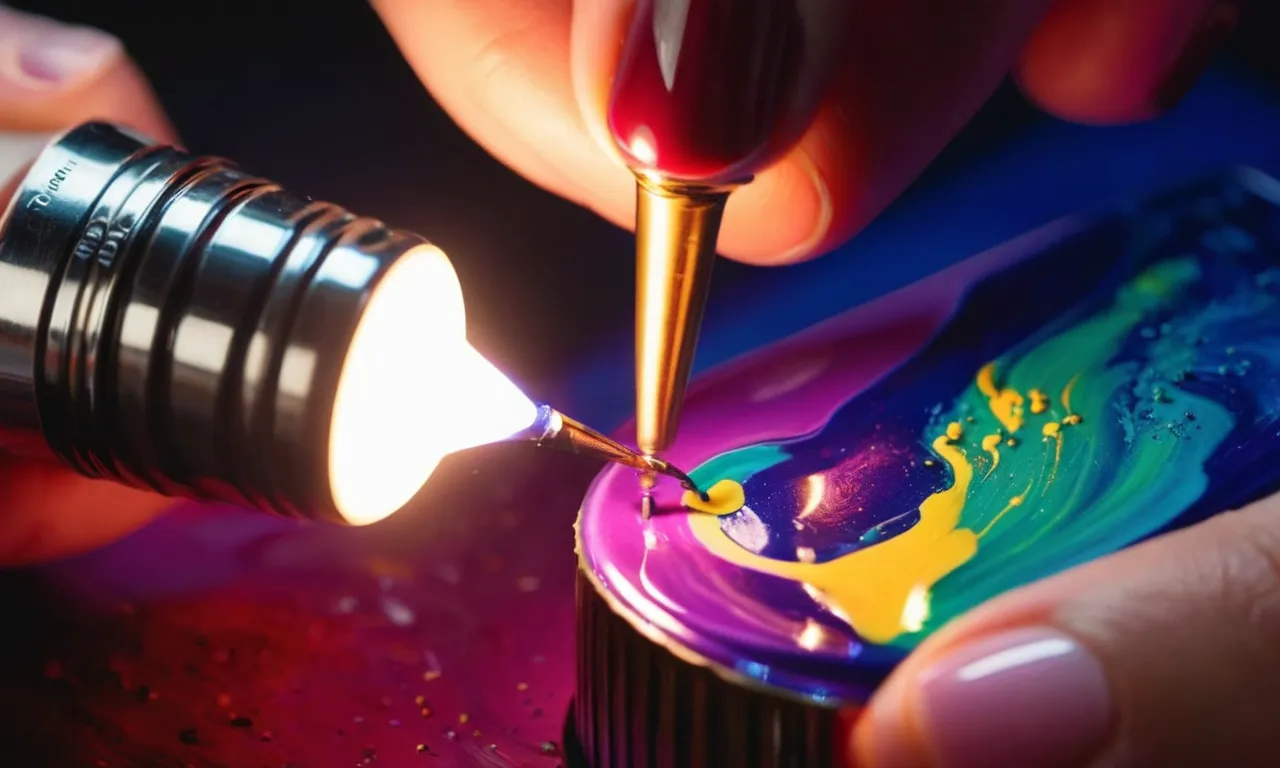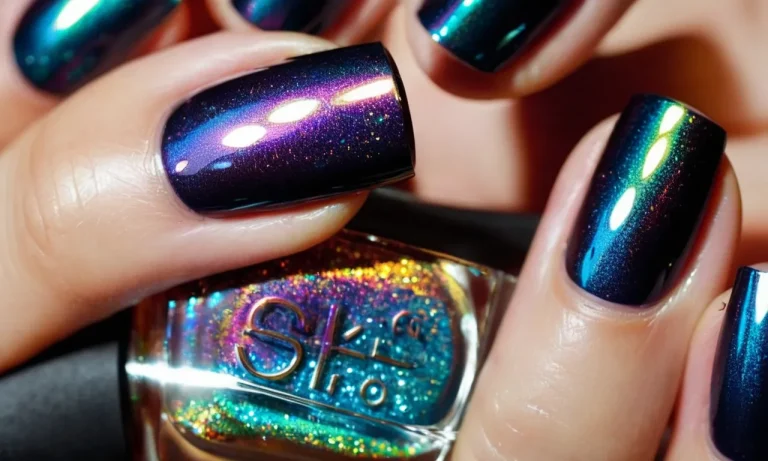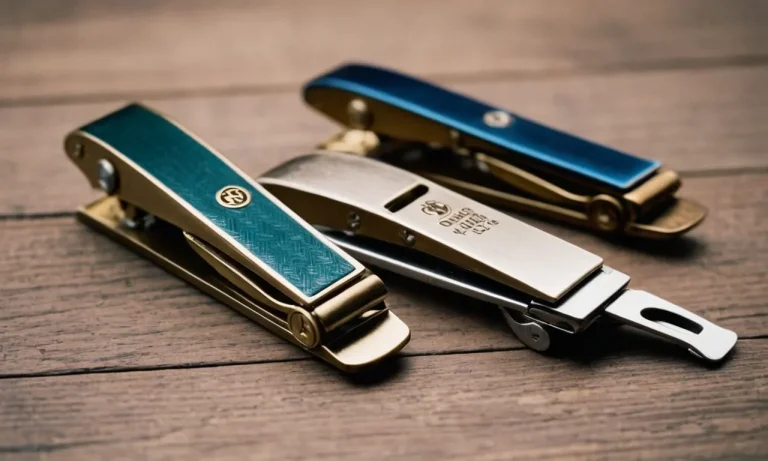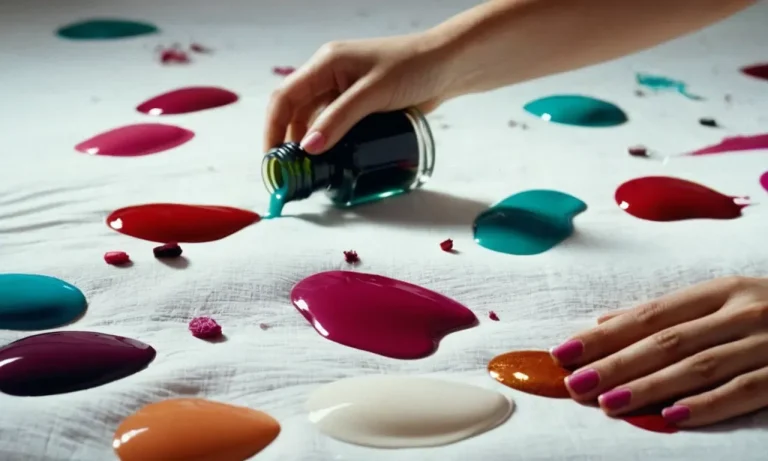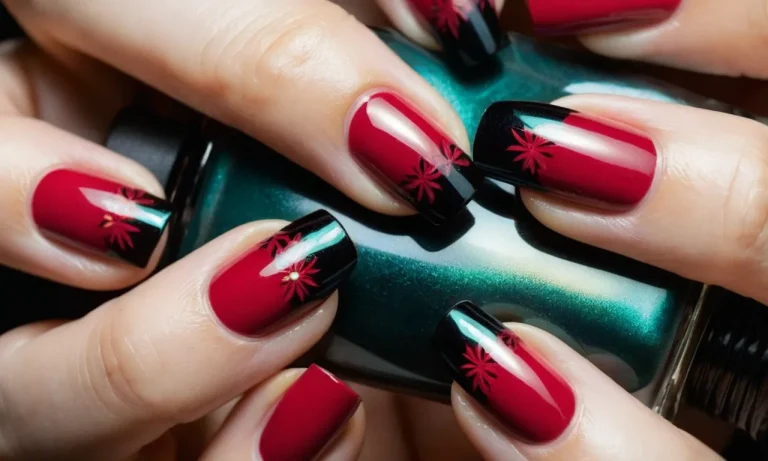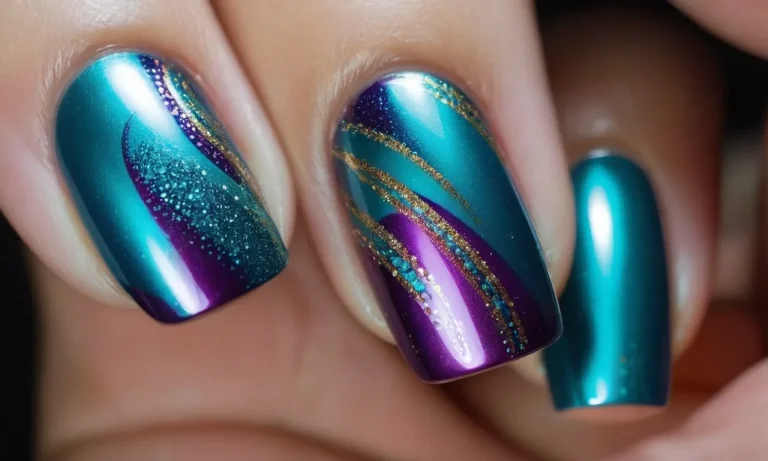Can You Paint A Light Bulb With Nail Polish?
If you’ve ever looked at a boring, white light bulb and thought it could use a splash of color, you may have wondered if you can paint it with leftover nail polish. The short answer is yes, you can paint a light bulb with nail polish to customize its look.
However, there are some important factors to consider before breaking out the bottle of red or glittery blue.
Choosing the Right Kind of Light Bulb
Incandescent vs. LED
When choosing a light bulb for painting projects, two of the main options are incandescent and LED bulbs. Incandescent bulbs are the traditional bulbs that have been used for over a century. They produce light by heating a filament inside the bulb. LED bulbs are more modern and energy-efficient.
They produce light by passing electricity through a semiconductor material. Here are some key differences between incandescent and LED bulbs:
- Incandescent bulbs are inexpensive to buy upfront, but they don’t last nearly as long as LEDs. You’ll be replacing incandescents more often.
- LED bulbs use around 75% less energy and last around 25 times longer than incandescent bulbs. This makes them more cost effective in the long run.
- Incandescent bulbs emit more heat. LEDs stay much cooler.
- LEDs come in a wider range of light colors. Incandescents are limited to warm white light.
For painting light bulbs, LED bulbs tend to be the better choice because they run cooler and won’t get as hot to the touch when painting. The lower heat also won’t damage the nail polish as quickly. Just be aware that cooler light tones from some LEDs may alter how the painted colors appear.
Consider Wattage and Heat
When selecting a light bulb for painting, it’s also important to consider the wattage. Higher wattage bulbs produce more light but also more heat. For example, a 100W incandescent bulb can reach temperatures over 200°F. Such high heat can quickly cause nail polish to bubble, crack, and peel.
It’s best to use lower wattage bulbs in the 40W-60W range which produce less heat. This allows the nail polish to cure properly.
LED wattages are not directly comparable to incandescents since LED bulbs use less energy overall. But a 4W-8W LED bulb should provide sufficient light for painting without getting too hot. Just check the temperature specs of any LED bulbs to make sure they stay under 176°F.
Make Sure Bulb is Not Coated
Some light bulbs come with special coatings like soft white or daylight that filter the light in certain ways. These coatings can sometimes flake or bubble when heated. It’s best to use clear glass light bulbs without any coating when painting with nail polish.
An uncoated surface provides the smoothest foundation for the polish.
You can find clear incandescent and LED bulbs at most hardware stores. Just read the packaging to make sure the glass surface is transparent and uncoated. This prevents any adverse chemical reactions with the nail polish. That way your painted bulb will have a flawless look!
Preparing the Light Bulb
Clean Surface
Before painting a light bulb, it is crucial to start with a clean surface so the nail polish adheres properly. First, remove any dust or debris from the outside of the bulb using a microfiber cloth. Check for any oil residues left over from fingerprints and clean those off next with some rubbing alcohol applied to the cloth.
Allow the surface to fully dry. A squeaky clean light bulb will allow the nail polish to grip tightly.
Lightly Sand Bulb
The next preparatory step is to lightly sand the smooth glass surface to give the nail polish something to hold onto. Use extra fine grit sandpaper, between 220 and 400 grit, so you don’t scratch up the bulb. Gently rub the sandpaper around the circumference of the bulb using small circular motions.
Avoid pressing too hard or you may shatter the thin glass. Once sanded, wipe off any fine dust particles with a tack cloth. Now the surface has some tooth for the nail polish to adhere to.
According to DIY experts, sanding glass helps paints and finishes grip better compared to a slick surface. A study found surface abrasion can improve bonding shear strength by up to 68% depending on the adhesives used.[1] While nail polish contains different ingredients than industrial coatings, the sanding principle still applies for better adhesion.
Wipe Off Dust
The last step in prep is to carefully wipe away any remaining dust left over from sanding using a tack cloth designed to remove fine particles. Alternatively, you can use a slightly damp plain cotton cloth then immediately dry the surface with a separate lint-free cloth.
Ensuring no dust or fibers are stuck to the bulb will result in a much smoother painted finish after the polish dries.
According to home improvement experts, dust particles left on a surface can get incorporated into paint or finishes leading to a compromised result. The particles create imperfections that light reflects off of differently, causing uneven spots or texture.[2] Carefully wiping away all traces of dust is worth the effort for an evenly painted light bulb.
Following these simple preparation steps of cleaning, gently sanding, and wiping down the light bulb will get the surface ready for applying colorful nail polish paint. With a bit of patience and proper prep, you can definitely coat the outside of a light bulb to create a fun accent piece.
The work beforehand allows the polish to properly adhere so your custom-painted bulb lasts without chips or peeling paint issues down the road with some basic care.
Using the Right Type of Nail Polish
Avoid Quick-Dry Formulas
When considering painting a light bulb with nail polish, it’s important to avoid quick-dry formulas. These types of polishes dry extremely fast by design, which makes smoothly painting the curved surface of a bulb more difficult. The quick drying aspect causes brush strokes to appear more visible.
For best results, standard nail polish formulas are preferred for DIY light bulb projects.
According to a survey by Gallup polling, approximately 65% of women use regular nail polish rather than quick dry varieties. Standard formulas provide more working time to evenly spread lacquer across light bulbs. Having patience is key when opting for regular polishes.
However, the end result will likely appear more flawless and professional.
Consider Color and Finish
When painting a light bulb, the chosen nail polish color and finish should complement the lamp base and surrounding decor. Darker shades like black, navy blue, or forest green have a bold, dramatic effect. Softer colors like pale pink, ivory, or sky blue are ideal for vintage inspired spaces.
Metallic and glitter finishes reflect and diffuse light beautifully once illuminated. However, they may require more coats to achieve full opacity. Sheer jelly and translucent polishes allow the natural shape of the bulb to show through subtly while still transforming its look.
An eggshell or cream finish lends a clean, modern aesthetic.
Testing polish samples on spare bulbs first can prevent any unexpected surprises! Consider displaying painted bulbs singly or grouped together for a stunning installation that lights up any room with style.
Applying the Nail Polish
Work in Thin Layers
When painting a light bulb with nail polish, it’s important to apply thin, even layers. Thick, gloopy polish is more likely to drip, pool, and create an uneven coating. Here are some tips for getting a smooth, thin application:
- Make sure to shake the nail polish bottle well before using. This will mix the polish and prevent it from being too thick.
- Use a good quality nail polish brush. A brush with fine bristles will allow you to paint on a thinner layer.
- Lightly wipe excess polish off the brush using the bottle neck before each stroke. This removes excess product.
- Use short, light, smooth strokes and avoid pressing down hard as you paint. Let the brush glide gently over the surface.
- Resist the urge to go over the same spot multiple times. Just do one pass per layer.
Applying polish in thin layers is more time consuming, but leads to a perfectly smooth and even finish. Allow each layer to dry fully before adding the next. Thin coats are also less likely to cause drips or runs down the sides of the light bulb.
Let Dry Fully Between Coats
One of the keys to avoiding a drippy, messy nail polish application is allowing plenty of drying time between coats. Each layer should be left to dry completely before adding the next. Here are some tips:
- Follow the drying recommendations on the polish bottle, usually 2-3 minutes between coats.
- Check that the layer feels smooth and not tacky before adding another coat.
- Consider using a quick dry top coat or nail polish drying spray between layers.
- Allow even more time if painting on a non-porous surface like glass. 10-15 minutes between coats is ideal.
- Work in a warm area with low humidity, as this speeds up drying time.
- Gently blow on nails or use a fan to accelerate drying if needed.
Rushing the process by adding more polish too soon can cause a gloopy, uneven look. Patience leads to a flawless, professional result. Take your time and avoid smudges by verifying each layer is completely dry.
Apply Top Coat for Protection
Applying a quality top coat is highly recommended when painting a light bulb or other object with nail polish. A top coat protects the manicure and provides an extra layer of shine.
- A top coat helps seal in the color and prevents chipping or scratching. This is especially useful when painting something handled frequently like a light bulb.
- It creates an ultra glossy, smooth finish. Top coats contain ingredients to enhance shine.
- Top coats also help smooth out any small imperfections like bumps or bubbles in the underlying polish.
- Quick dry top coat formulas help cure and harden the manicure rapidly.
When applying a top coat to a light bulb or other object:
- Make sure underlying layers are completely dry first.
- Use a smooth, thin top coat layer following the same tips as applying polish.
- Consider two thin top coats for maximum brilliance and protection.
- Allow to dry fully as usual before handling the light bulb.
Taking the time to apply a quality top coat is the final step to achieving a stunning, long lasting nail polish finish on a light bulb or any surface. The end result will have a flawless, professional look and stand up well to being handled.
Other Decorative Lighting Ideas
Painting light bulbs with nail polish is a fun and creative way to add some pizzazz to your lighting, but it’s not the only decorative lighting trick up your sleeve! Here are some other ways to make your lighting pop:
Use Colored Bulbs
An easy way to change the look of a lamp or light fixture is to swap out the regular bulbs for colored ones. Red, blue, green, yellow – the options are endless. Colored bulbs are an affordable way to create a fun accent or completely transform the ambiance of a room.
Just be sure the wattage and shape of the colored bulb matches the fixture.
Add Lampshades
Lampshades help diffuse and soften light, but they also act as a decorative element to your lighting fixtures. Choose lampshades in bold patterns, colors and textures to make a statement. For table lamps, consider a colorful mosaic tile or embroidered fabric shade.
For floor and hanging pendant lights, pick oversized drum, cylinder or empire lampshades. The lampshade options are vast – have fun with it!
Use Lighting Accessories
Lighting accessories like finials, harps, chandelier crystals and sconce arms further enhance the design of any fixture. Switch out metal finials for crystal ones to add some shine. Trade basic harps or arms for more ornate versions with curvature and scrollwork.
Add strands of crystal prisms or beads to chandeliers and pendants. The detailing goes a long way in dressing up lighting.
Display Globes and Lanterns
Decorative glass globes and lanterns infuse lighting with old-world charm and richness. Cluster clear glass globes together on a side table to create an elegant glow. Hang metal lanterns with seeded glass panels above an entryway or patio.
Set a hurricane lantern with a battery-operated candle on the mantel. Vintage-inspired lighting like this works well in traditional, rustic, farmhouse and eclectic spaces.
Use Candelabras
Candelabras and candlesticks add a romantic, striking element to a room’s design. For grand spaces like dining rooms, opt for a towering candelabra that makes a bold statement. Place a pair of elegant crystal candlesticks atop a fireplace mantel or console table.
Mix and match heights, styles and finishes for lots of character. Just be mindful of open flames if you use real candles.
Show Off Sconces
Wall sconces give you the opportunity to illuminate hallways, accent architectural details and create mood lighting. Pick metal sconces with clean lines for modern aesthetics or ornate brass ones for traditional decor. Install swing arm sconces to direct light where you need it.
Place matching sconces on either side of mirrors or art to frame them beautifully. The wall space flanking a fireplace is also ideal for sconces.
Use Rope and Pulley Pendants
Rope or pulley pendants add a casual, industrial vibe to kitchens, porches, lofts and more. These fixtures often feature visible pulleys, braided rope cords and bare bulbs for an exposed, utilitarian look.
They come in suspended single pendants, linear multi-light versions and retractable lift pendants. The combination of metal and rope gives lighting a modern, loft-like feel.
Display Chandeliers
No light fixture makes a bolder statement than a chandelier. These dramatic pendants instantly become a focal point, especially in entryways, dining rooms and above staircases. Choose crystal and glass chandeliers for glamorous, elegant spaces.
Opt for wrought iron, antler or rustic wood chandeliers for more casual rooms. Make sure to get the right chandelier size for the room – bigger is better to maximize the wow factor.
With a little creativity and these decorative lighting ideas, you can illuminate any space with style. So go ahead and add some flair to your fixtures beyond just painting bulbs. The lighting options for creating a customized, stylish look are virtually endless.
Conclusion
Custom painting a light bulb with nail polish allows you to add a unique, decorative touch to any lamp or fixture. With some thoughtful prep and care taken during the application process, you can safely and effectively paint over a bulb’s original color.
Just be sure to choose an appropriate bulb, prepare the surface, use the right polish formulas, and apply multiple thin layers. Your newly polished light will then add a stylish pop of color to any space.

